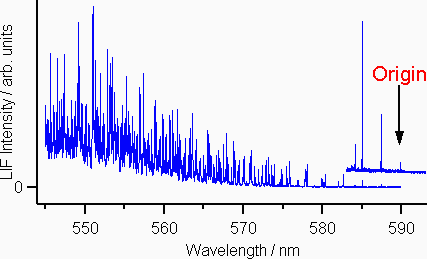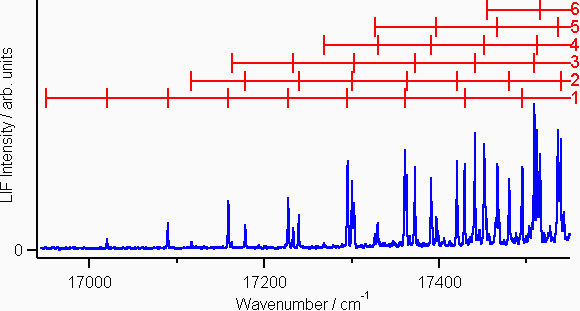Results and dicussion
Numerous vibronic bands were observed in the LIF excitation spectra. The vibronic bands are heavily congested and cover the whole wavelength region. The longest wavelength band is observed at 589.81 ± 0.02 nm and is assigned to the electronic origin of the S1 state.


Vibrational progressions were observed with constant frequency intervals (60-70 cm−1) from the origin to the higher energy region. The constant intervals indicate harmonic, torsional vibrations of the two phenyl groups. Therefore, the potential energy surface in the S1 state is expected to have a single minimum where the two phenyl rings and the BBTD plane in DPBBTD are coplanar. In this case, the potential energy surface in the S0 state should have an energy barrier at the coplanar conformation. The phenyl groups and the BBTD skeleton probably have a torsion geometry in the S0 state due to their intramolecular interference. In the S1 state, however, the DPBBTD molecule has a planar conformation just as does the biphenyl molecule because the π-interaction is enhanced and the intramolecular interference is ineffective.
